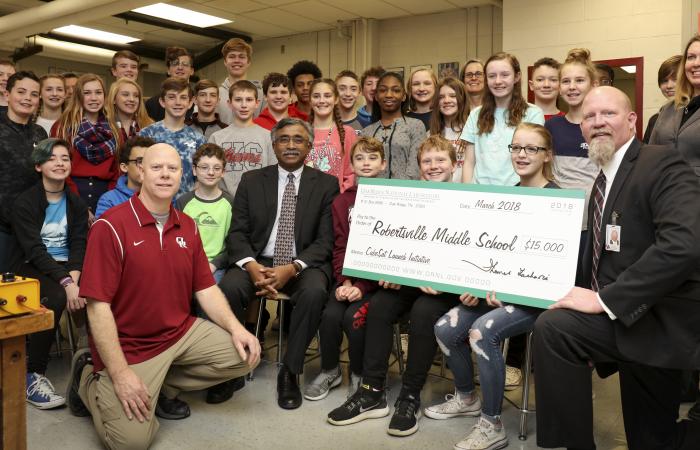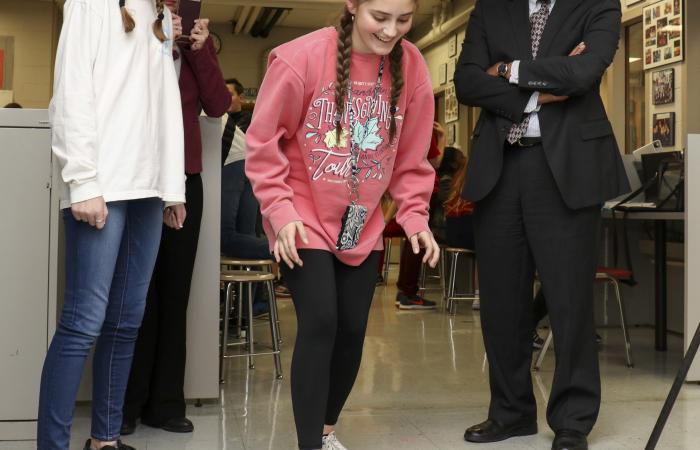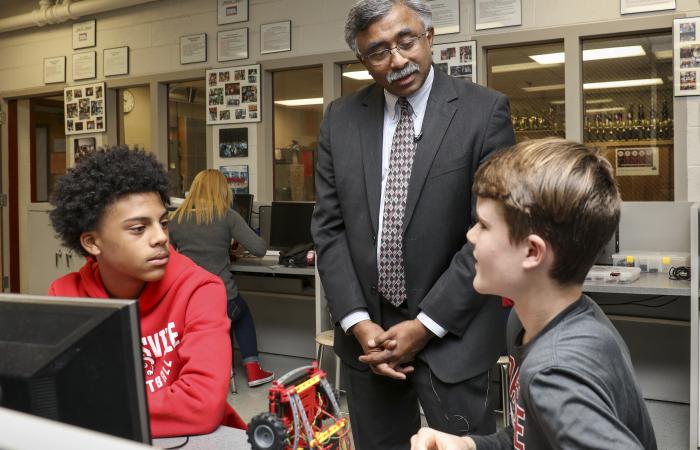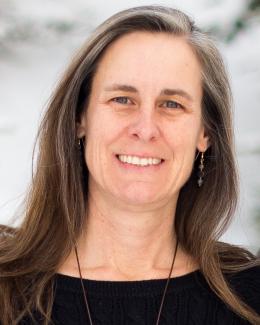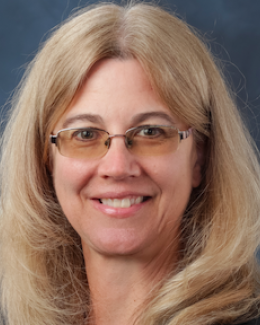ORNL staff help Robertsville students design CubeSat for NASA STEM program
March 9, 2018 – Last November a team of students and educators from Robertsville Middle School in Oak Ridge and scientists from Oak Ridge National Laboratory submitted a proposal to NASA for their Cube Satellite Launch Initiative in hopes of sending a student-designed nanosatellite named RamSat into space. NASA's CSLI provides opportunities for small satellite payloads built by schools and nonprofit organizations to fly on upcoming launches.
The STEM-inspired program is a low-cost way to conduct scientific investigations in space, enabling students, teachers and industry partners to obtain hands-on development experiences.
ORNL Director Thomas Zacharia visited the school March 9 to present a $15,000 UT-Battelle donation toward building the RamSat. The lab’s Energy and Environmental Sciences Directorate also provided community engagement funds toward the project.
Robertsville's proposal for RamSat was accepted, the first selected from a middle school. Launch opportunities will come during 2019, 2020 and 2021 on planned NASA, other U.S. or commercial space flight missions, or on the International Space Station. The Robertsville payload is one of 21 satellites selected for participation as an educational mission to develop and implement a middle school STEM curriculum for building a CubeSat.
Peter Thornton, one of the RamSat team leaders from ORNL, said, "This is such an exciting opportunity for the students. They will now have the chance to design, build, carry out and own a satellite mission. They will be the mission scientists, the communication specialists, and the logistics experts. They will calculate orbits, learn to aim their satellite camera at selected targets on the ground, radio their commands to RamSat, and receive and interpret the digital data streams broadcast by RamSat, containing imagery and all the other important data gathered on-board. They'll be working as a team to identify and solve problems, and they will be working with NASA professionals to integrate RamSat into the launch and deployment missions.
"I can't think of a more exciting project to ignite the students' curiosity and passion for science and engineering," Thornton said.
ORNL participation in the proposal development and ongoing classroom activities came from Peter Thornton, Michele Thornton, Melissa Allen, Ralph Dinwiddie, Katie Corcoran, Nathan Phil and Humaira Taz. Helping with merit reviews prior to proposal submission were Suresh Vannan (who led the independent feasibility review panel), Vladimir Protopopescu, Jagjit Nanda and Andrew Harter.
ORNL is managed by UT–Battelle for DOE’s Office of Science, the single largest supporter of basic research in the physical sciences in the United States. DOE’s Office of Science is working to address some of the most pressing challenges of our time. For more information, please visit http://energy.gov/science/.


